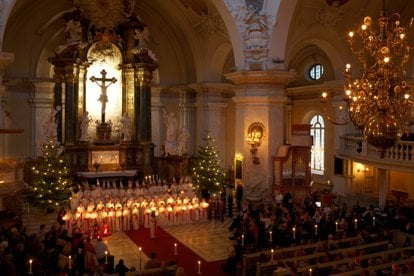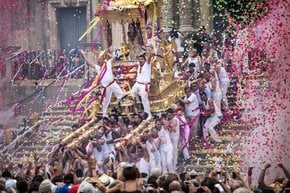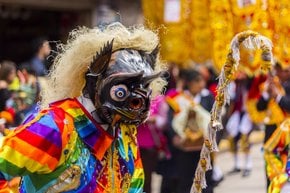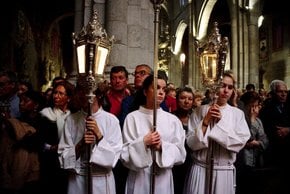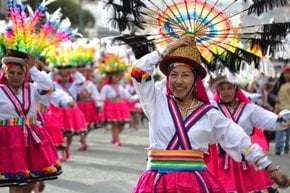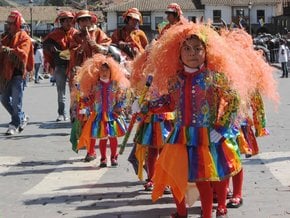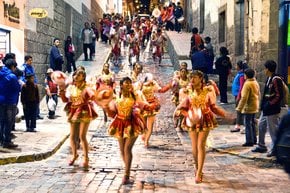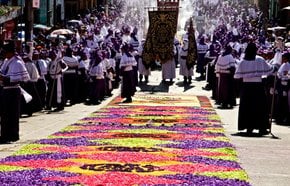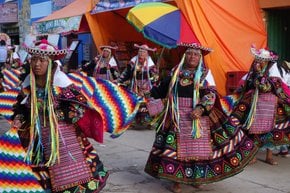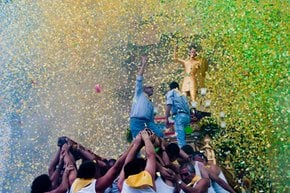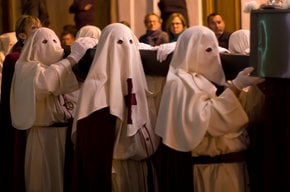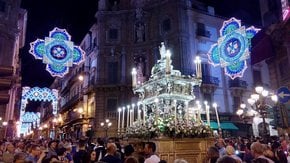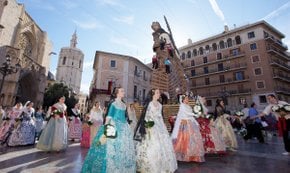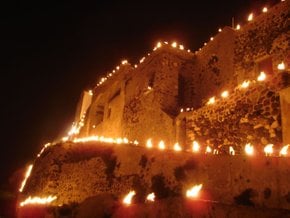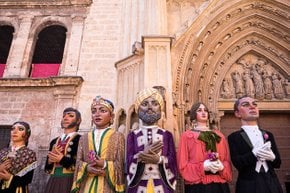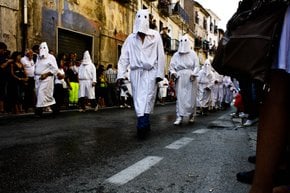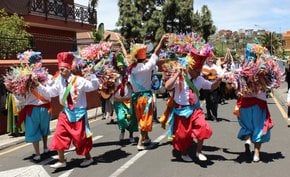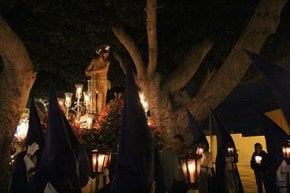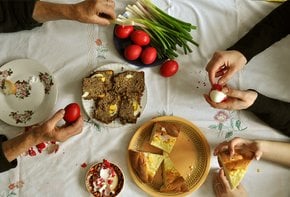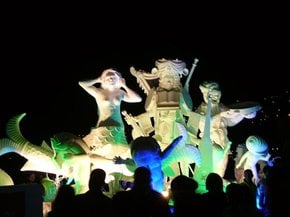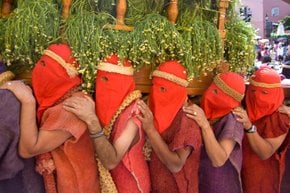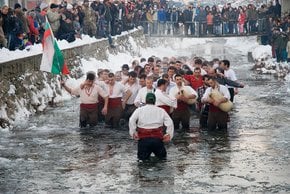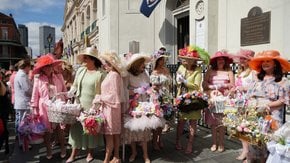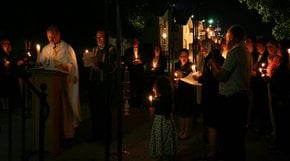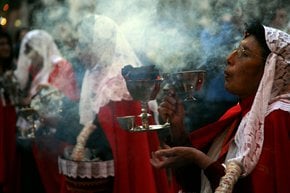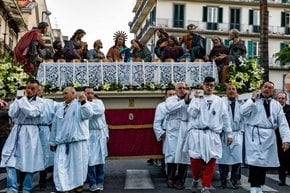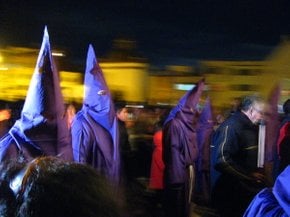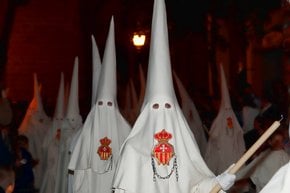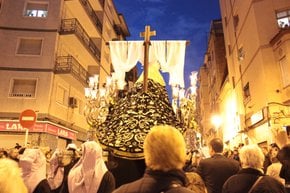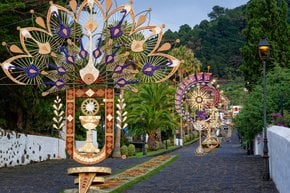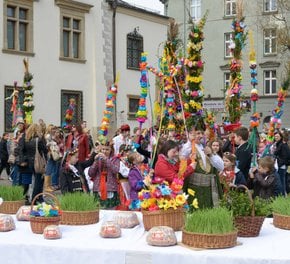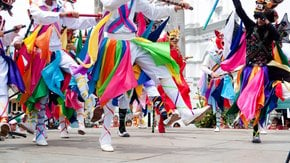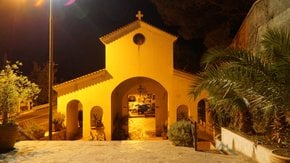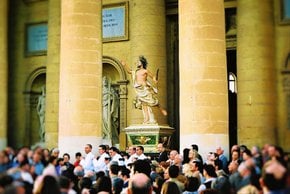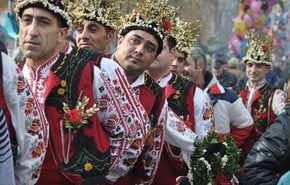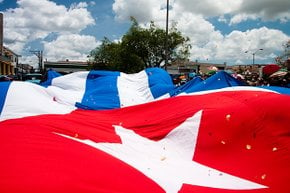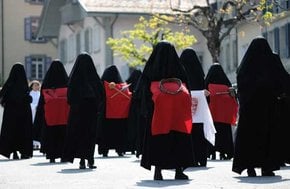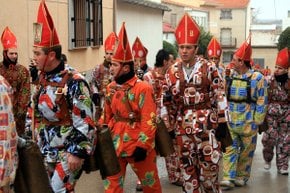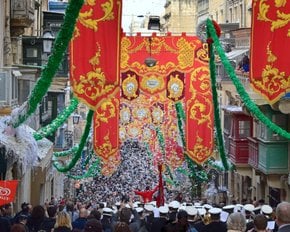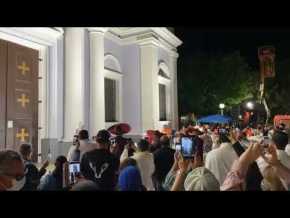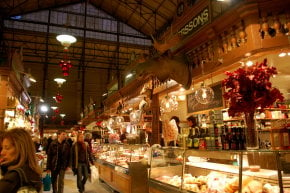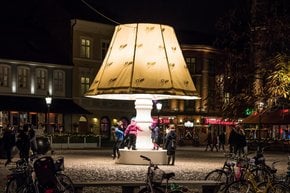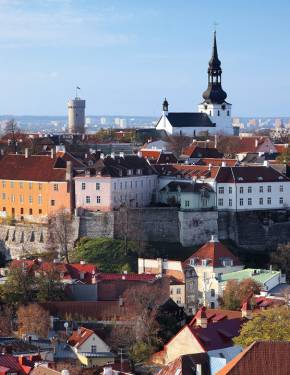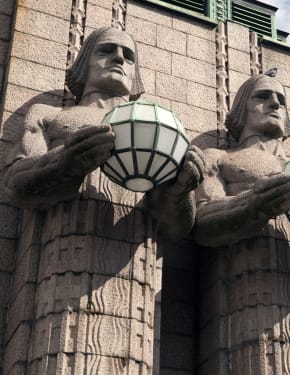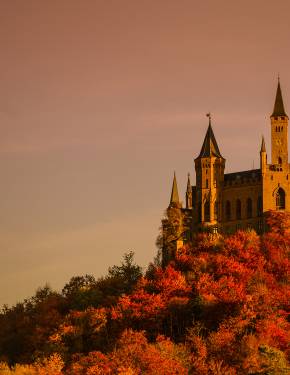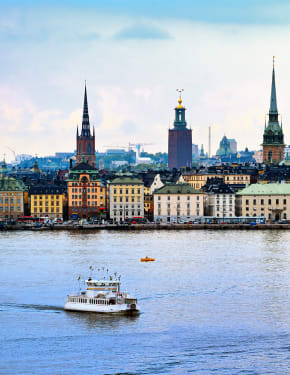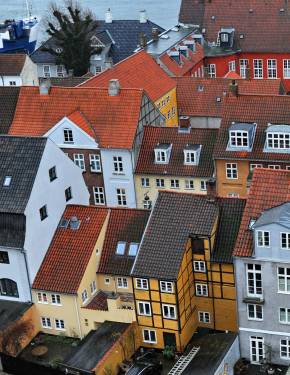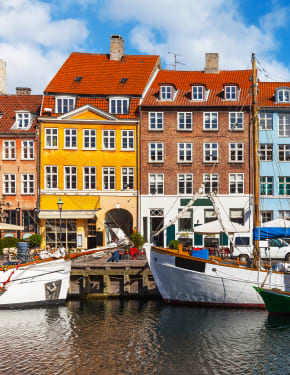St. Lucia Day 2025 in Sweden
One of the celebrations that light up the gloomy winter season
Dates: December 12–December 13
One of the most recognizable Swedish holidays, celebrated annually in December, St. Lucia Day, honors the martyr Lucia, who died in Syracuse in 304. According to a Swedish legend, Lucia was also the first wife of Adam, who consorted with the devil. Therefore, the holiday represents both light and darkness.
Celebration Highlights
Holiday's main highlight is the St. Lucia Procession, when a young girl in a white robe and a wreath of candles on her head is followed by a group of other girls. In small towns, girls enter competitions to become Lucia, and the winner is paraded around the town in a horse-drawn carriage. In large cities, visitors can see Lucia processions early in the morning at different businesses, schools, universities, and shopping malls. In the evenings, special St. Lucia concerts are held in major churches.
St. Lucia Holiday in Stockholm
In Stockholm, one of the best locations to experience the St. Lucia Procession and Concert is the Stockholm Cathedral (Storkyrkan). The Cathedral's solemn ambiance enhances the beauty of this traditional celebration, making it especially moving. Another excellent option is to attend a Lucia concert at the Berwald Concert Hall, where the Swedish Radio Philharmonic Orchestra performs. This concert lights up December with a blend of American Christmas carols and traditional Swedish Lucia songs, beautifully performed by children from Stockholm's Nacka Music School.
St. Lucia in Skansen
The largest celebration honoring Saint Lucia takes place at the Skansen Open-Air Museum on Djurgården Island. This three-day program features traditional concerts, processions, and celebrations held across Skansen's historic buildings and venues. Some performances focus on historical accuracy, while others offer a more contemporary take, providing a blend of authenticity and modern flair.
St. Lucia at Christmas Markets
St. Lucia processions are a highlight at many Swedish Christmas markets. In Malmö, the city’s main square hosts a Santa Lucia procession on December 13 at 6:30 pm. Over in Gothenburg, Liseberg Christmas Market, Sweden’s largest, features a Lucia Day celebration complete with choir singing, holiday buffets, and traditional saffron buns. The familiar strains of "Sankta Lucia" often inspire onlookers to join in, as this beloved Lucia song is widely known by heart across Sweden.
Origins
Lucia Day, or Saint Lucy's Day, dates back to the 4th century and is a Christian feast honoring Lucia of Syracuse. According to legend, Lucia brought food to Christians hiding in Roman catacombs, using a candlelit wreath to light her path while keeping her hands free. Celebrated on December 13, historically the shortest day of the year in the Julian calendar, Lucia Day intertwines with Swedish folklore that held long winter nights to be perilous, as dark spirits were believed to roam. Staying awake and eating helped ward off these dangers, a tradition that carries over to the feasting associated with Lucia Day. The first documented celebration in a Swedish home occurred in 1764, but the custom took root widely in the 1900s.
Evolving Traditions of Lucia Day
In addition to symbolizing light, Lucia is known for offering festive treats, especially gingerbread biscuits and saffron buns called "Lussekatt," shaped in an S-curve. This traditional bun is an iconic part of Lucia Day celebrations, and many Swedes consider it a seasonal delicacy, typically enjoyed only in the lead-up to Christmas.
While Lucia Day is deeply traditional, it has continued to adapt over time. In past years, the selection of a "Lucia" often felt similar to a beauty contest. However, today, the process is more inclusive, with schools often choosing their Lucia through a lottery or by allowing multiple students to represent Lucia, especially among younger children. While many now opt for battery-powered candles, a special atmosphere remains when the lights dim and children's voices fill the air with song.
Here, you can read about St. Lucia celebrations in Norway.


